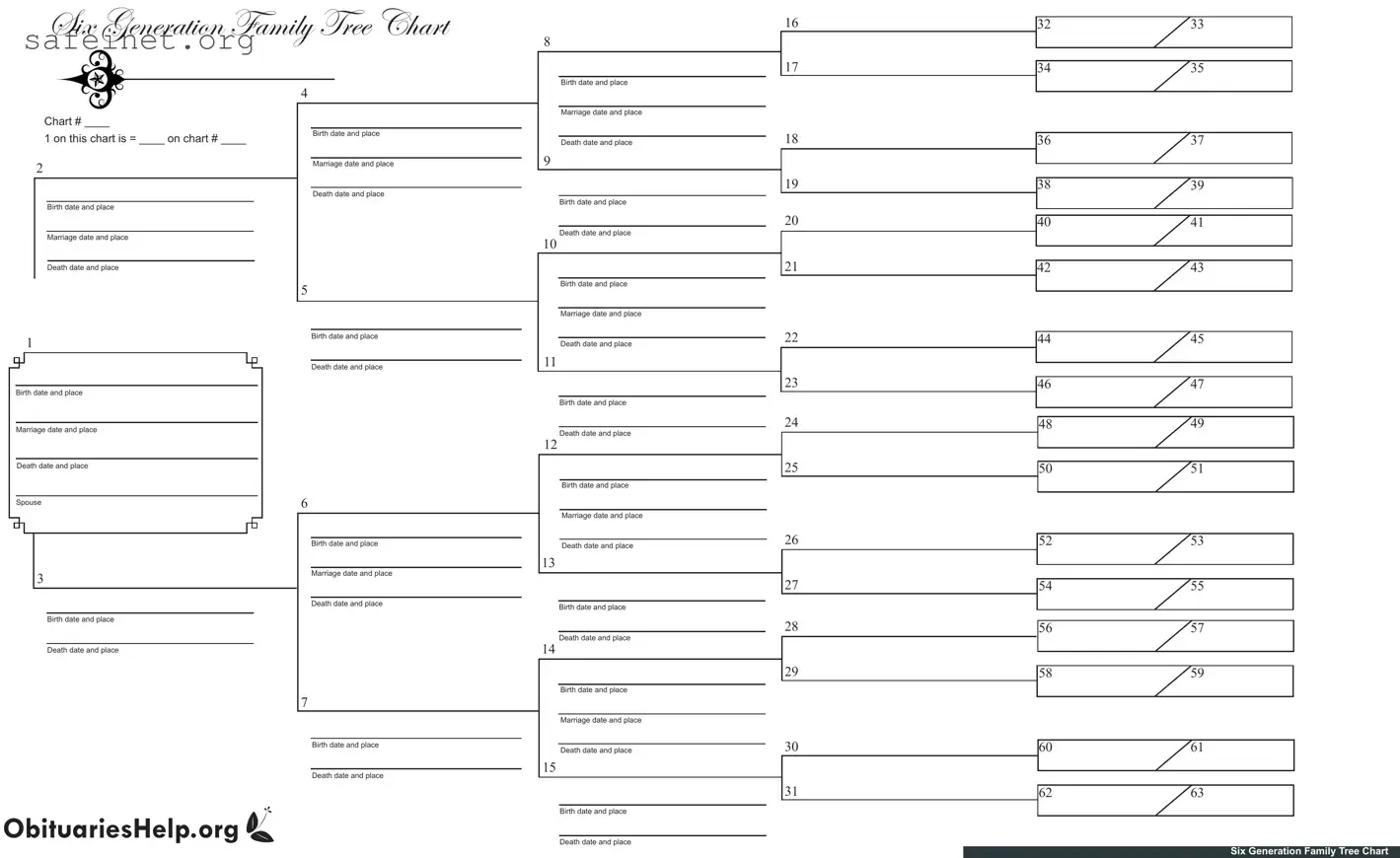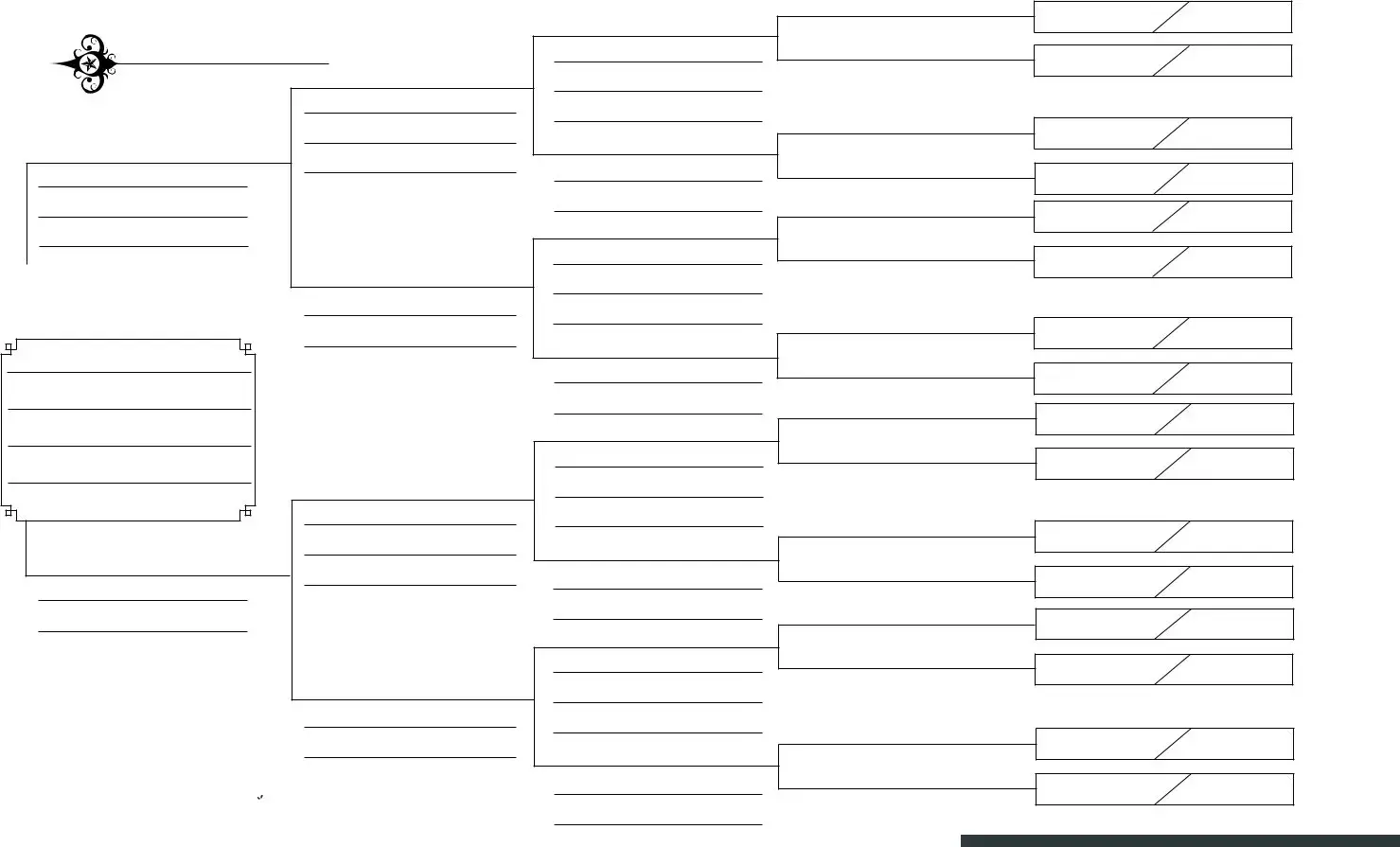What is the Op Order form?
The Op Order form is designed to help individuals organize and document their family history. It includes space for recording information about family members across up to six generations, covering key details like birth, marriage, and death dates as well as places related to those events.
How do I fill out the Six Generation Family Tree Chart?
To fill out the chart, start by entering the primary person's information in the designated spot. You will see numbered slots for each family member. For each person, provide their birth date, marriage date, and death date, along with the corresponding locations.
Can I add more family members than the chart allows?
The standard chart accommodates six generations, but if you need to include more family members, consider using multiple forms. Make sure to connect them appropriately to maintain clarity in your family tree.
What do the numbers (8, 16, 17, etc.) represent on the chart?
The numbers on the chart indicate the position of each family member within the family tree structure. For example, the number "1" typically represents the primary individual, while subsequent numbers show their direct descendants and relatives traced through generations.
Is there a specific format for entering the dates?
While there is no strict format, it is generally recommended to use a consistent style, such as month/day/year (MM/DD/YYYY). This will ensure clarity and consistency throughout your chart.
What if I don’t know certain information about a family member?
If you're missing information, it’s perfectly fine to leave those sections blank. Documenting what you do know is still valuable. You can always come back and update the chart as you gather more information.
Where can I find additional resources for filling out the Op Order form?
Helpful resources can often be found online, including genealogy websites and family history forums. Additionally, community libraries and local genealogical societies frequently host workshops or offer guidance on documenting family trees.
What should I do if I make a mistake on the form?
In the case of an error, simply cross out the mistake and write the correct information alongside it. Alternatively, if legibility is a concern, consider using a new form altogether, especially if the mistake might cause confusion.
Can I save my information digitally?
If the Op Order form is available in a digital format, saving it electronically can be convenient. You can easily update and access it as needed. If you are using a paper form, consider making copies for future changes or transfers to a digital format.
What can I do with the completed Op Order form?
Once completed, the Op Order form serves as a foundational document for your family history. It can be shared with relatives, used for research purposes, or even submitted to genealogy organizations. It's a great way to preserve your family's legacy.



